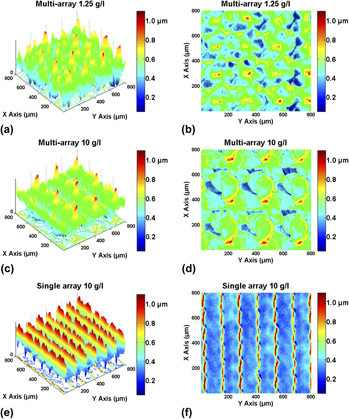Crossref Citations
This article has been cited by the following publications. This list is generated based on data provided by
Crossref.
Angmo, Dechan
Sweelssen, Jorgen
Andriessen, Ronn
Galagan, Yulia
and
Krebs, Frederik C.
2013.
Inkjet Printing of Back Electrodes for Inverted Polymer Solar Cells.
Advanced Energy Materials,
Vol. 3,
Issue. 9,
p.
1230.
Haldar, Amrita
Liao, Kang-Shyang
and
Curran, Seamus A.
2014.
Fabrication of inkjet printed organic photovoltaics on flexible Ag electrode with additives.
Solar Energy Materials and Solar Cells,
Vol. 125,
Issue. ,
p.
283.
Peng, Xiaojin
Yuan, Jian
Shen, Shirley
Gao, Mei
Chesman, Anthony S. R.
Yin, Hong
Cheng, Jinshu
Zhang, Qi
and
Angmo, Dechan
2017.
Perovskite and Organic Solar Cells Fabricated by Inkjet Printing: Progress and Prospects.
Advanced Functional Materials,
Vol. 27,
Issue. 41,
Urbina, Antonio
Abad, José
Fernández Romero, Antonio J.
Lacasa, Jesús S.
Colchero, Jaime
González-Martínez, Juan F.
Rubio-Zuazo, Juan
Castro, Germán R.
and
Gutfreund, Philipp
2019.
Neutron reflectometry and hard X-ray photoelectron spectroscopy study of the vertical segregation of PCBM in organic solar cells.
Solar Energy Materials and Solar Cells,
Vol. 191,
Issue. ,
p.
62.
Elangovan, Hemaprabha
Maske, Ankita
Narayanan, Ravishankar
Ramamurthy, Praveen C.
and
Chattopadhyay, Kamanio
2020.
Green synthesis of germanium nano ink and inkjet printing of Si/Ge heterostructure.
Materials Research Bulletin,
Vol. 132,
Issue. ,
p.
110984.
Maisch, Philipp
Tam, Kai Cheong
Jang, DongJu
Steinberger, Marc
Yang, Fu
Brabec, Christoph J.
and
Egelhaaf, Hans-Joachim
2021.
Organic Flexible Electronics.
p.
305.
Zhang, Xin
Zhang, Hong
Li, Shilin
Xiao, Linge
Zhang, Siwen
Han, Bing
Kang, Jiajie
and
Zhou, Huiqiong
2023.
Development and application of blade-coating technique in organic solar cells.
Nano Research,
Vol. 16,
Issue. 9,
p.
11571.
Sang, Lifeng
Chen, Xingze
Fang, Jin
Xu, Peng
Tian, Wenming
Shui, Ke
Han, Yunfei
Wang, Hao
Huang, Rong
Zhang, Qing
Luo, Qun
and
Ma, Chang‐Qi
2023.
Elimination of Drying‐Dependent Component Deviation Using a Composite Solvent Strategy Enables High‐Performance Inkjet‐Printed Organic Solar Cells with Efficiency Approaching 16%.
Advanced Functional Materials,
Vol. 33,
Issue. 45,
Hu, Taotao
Zhang, Minggang
Mei, Hui
Chang, Peng
Wang, Xiao
and
Cheng, Laifei
2023.
3D Printing Technology Toward State‐Of‐The‐Art Photoelectric Devices.
Advanced Materials Technologies,
Vol. 8,
Issue. 4,
Yang, Jianjun
Wang, Xiansheng
Yu, Xiaobao
Liu, Jiaxuan
Zhang, Zhi
and
Zhong, Jian
2023.
Optimization of Large-Area PM6:D18-CL:Y6 Ternary Organic Solar Cells: The Influence of Film Thickness, Annealing Temperature, and Connection Configuration.
Coatings,
Vol. 13,
Issue. 9,
p.
1561.
Lukyanov, Daniil A.
and
Levin, Oleg V.
2024.
Inkjet Printing with (Semi)conductive Conjugated Polymers: A Review.
ChemEngineering,
Vol. 8,
Issue. 3,
p.
53.



